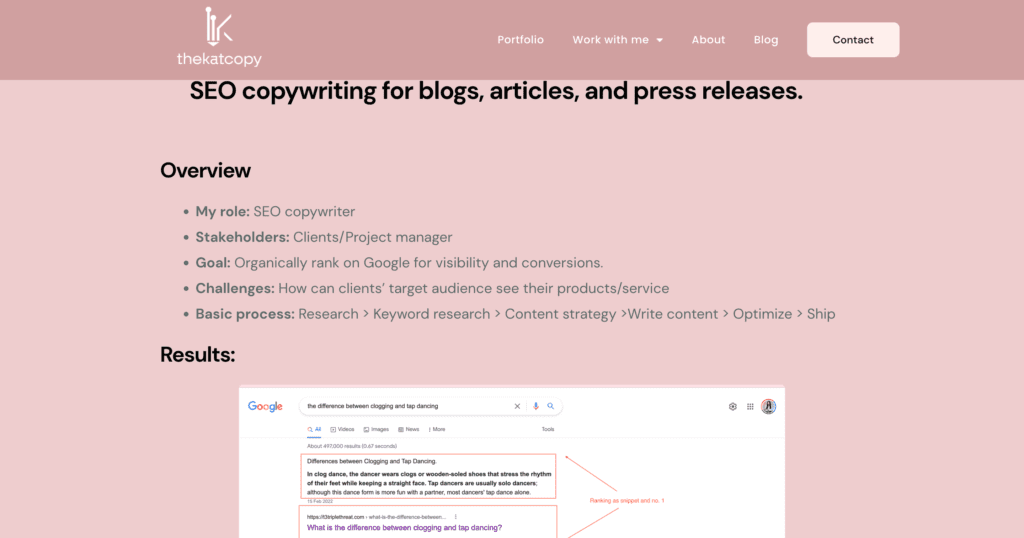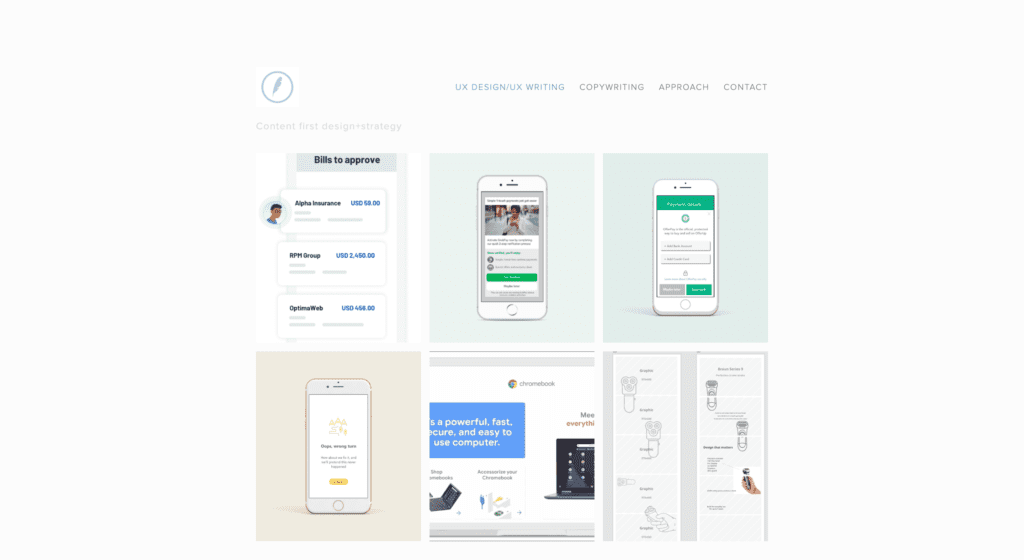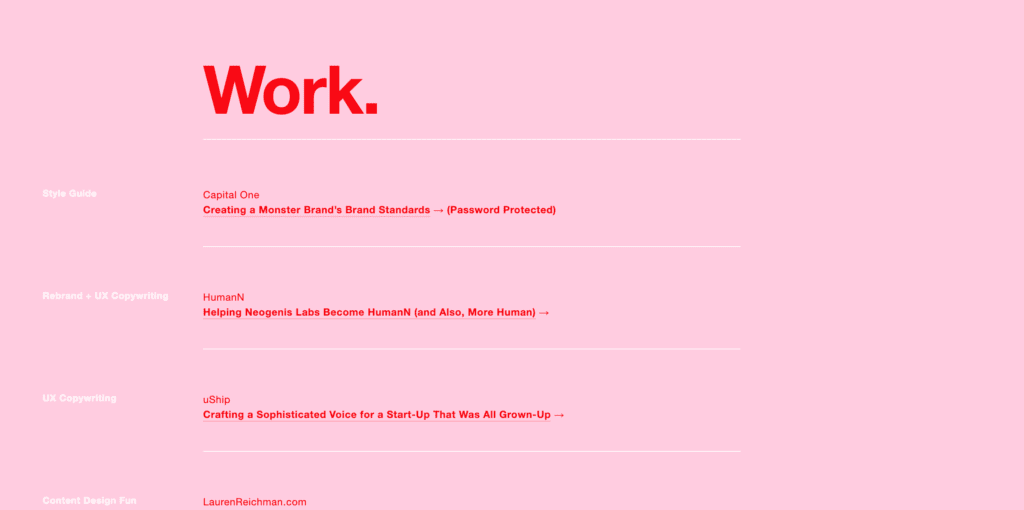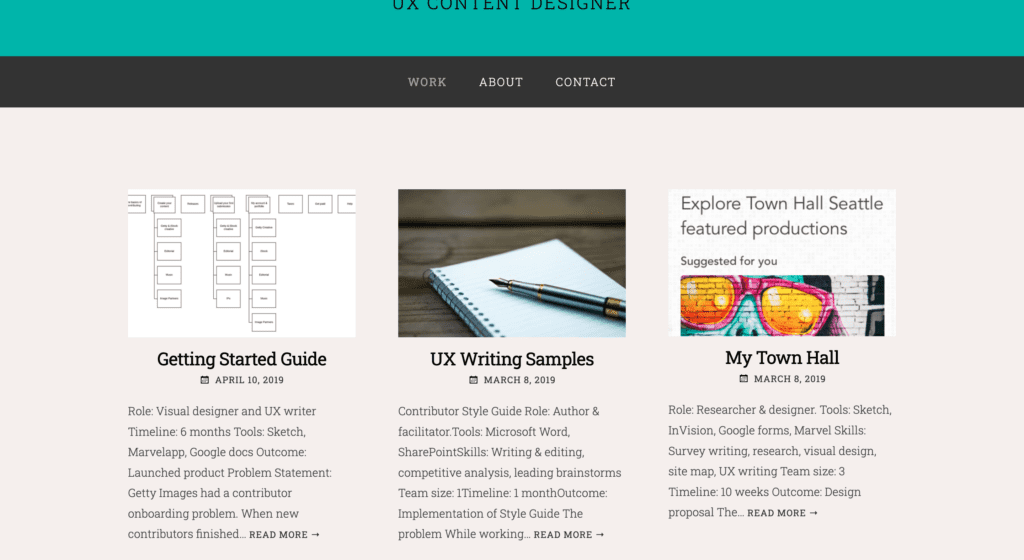How to Build a UX Writing Portfolio: A Practical Guide
How to Build a UX Writing Portfolio: A Practical Guide

Building a UX writing portfolio is the boon and bane of the god of many faces, a.k.a. UX writing.
Okay, maybe it’s a reach comparing the UX writer to the god of many faces in Game of Thrones when the only thing we slay is Loren Ipsum.
However, some similarities can be seen, especially in the many names we bear.
We may be referred to as:
- UX Copywriters
- Content Designers
- UX Content Strategists
- Product Writers
Though you may find these roles on products, marketing, and engineering teams, one thing is constant: we write data-driven, user-centric copy that gives a product a voice.
Given that UX writing is typically incorporated into different departments, creating a portfolio to showcase your UX writing abilities is one of the most challenging aspects of the profession.
A good UX writer, on the other hand, is a problem solver. So, how do you approach the challenge of “how to build a UX writing portfolio?”
What is a UX writing portfolio?
A UX writing portfolio is a collection of web pages that summarizes you and your work. Think of it as a digital asset that showcases your work, methodologies, and the value you bring to the table as a UX writer.
Why create a UX writing portfolio?
The digital world is ever-changing, and over the years, many professionals have had to adapt to these changes to stay relevant.
For example, many graphic designers have gone from pushing pretty pixels to functional UX design.
Today, copywriters or other writers are transitioning, or somewhat evolving, to UX writing after realizing they could do more with words than sell a product; guide users through using that product—UX copywriting.
The same was true for me three years ago when I did my first UX writing project as an in-house copywriter. And since then, I have written copies within and around products, with a portfolio to show. But it wasn’t always so.
Like you, I struggled to put my background in editorial, marketing, and product writing experience into a UX-focused portfolio until I found a practical way that I’ll share with you in a bit.
How to Build a UX Writing Portfolio: A Practical Guide
Get to know your audience ( like you would in an actual UX project )
As mentioned above, your UX portfolio is your digital asset. Hence you should treat it as you would a product.
Just as all product requires understanding the user’s needs, your UX writing portfolio should show your understanding of the audience you want to target. In this case, recruiters or employers. What might their priorities and approaches to hiring be?
One way to find out is to browse through UX writing job description postings and note the skills and requirements.
You can take things up a notch by researching a company’s voice and tone principles, then tailor your samples to those principles.
For example, suppose you want to work at Google. In that case, you’ll want to start with Google’s Material Design System or, according to Tom Cotterill, UX Recruiter at Source LF, If you’re applying for a UX role focusing on apps, have clear samples and processes of your previous app work.
Empathize
It’s not news that having empathy is one of the keys to being a better UX writer; your UX writing portfolio is an excellent place to showcase that.
Put yourself in the recruiter’s shoes, and imagine their average day; recruiters may have to filter through a series of applications daily.
Ask yourself if a busy hiring manager can understand your work process in minutes.
When you empathize with their day-to-day journey, you want to write concisely and clearly. Avoid overwhelming potential clients with too many UX writing samples. This is your writing portfolio, not a diary. A rule of thumb is to showcase 2-3 projects that best demonstrate your range of skills in a category.
Here’s how I do this on my portfolio. I showcase my editorial background as hyperlinked logos near the footer of my portfolio page. This way, if a recruiter is interested in seeing how I write in a more extended context; they can click on a logo to view it, and in under a few minutes, they can see what I’ve written and for whom instead of linking to the over 200 articles I’ve written online.
What should I include in my UX writing portfolio?
After reading this interview of some UX recruiters and managers worldwide by Justinmind.com, I can summarise what recruiters are looking for in three main things:
- You have an end-to-end understanding of the UX design process.
- You have experience using words to solve problems.
- You can tell a story about how your “why” informs the “what.”
In other words, UX writers are responsible for the words on the user interface; thus, your portfolio should tell a story around the written solutions you created, structured as Case studies or Themes.
Case studies
Don’t be afraid of case studies; see them as an opportunity to showcase your storytelling abilities in your UX writing samples.
Here’s some advice from UX/Product Design, Rebecca Levi – Recruiter at The Joanne Weaver Group
” Practice presenting your case studies with Storytelling. The interviewer wants to understand your process, your contribution to the team, and how your mind works”.
All good case studies have one thing in common: a clear structure: Scope, Process, and Solution.
Here’s a tip: Create a logical narrative arc to showcase your ability to stick to a story’s path. It’ll help you stick to the story’s beginning, middle, and end.
Group UX writing samples in themes
You can present a list of projects within a theme with a summary for each one.
For example, show five different landing pages with a summary of the scope, your process, and solutions.
As a UX writer, in addition to writing landing pages, you may contribute articles to your company’s UX writing blog section, as it’s still an emerging field. We see UX writers do this on Hubspot.
In this case, a UX writer with knowledge of on-page SEO copywriting who can write naturally with keywords so readers can easily find and understand the content is a plus.
Here’s how I present my SEO blog samples in themes.
How do I present my UX writing portfolio?
In the past, when I thought about this question, I meant what form, structure, or layout should I present my UX writing portfolio?
Well, it’s no news that your portfolio should have great UX. However, you don’t need to be a UI designer to achieve this.
As soon as you know what the hiring manager is looking for, it becomes much easier. That’s assuming you’ve done your homework on points one and two.
As discussed, a UX writing portfolio needs to do three things:
- Outline the problem.
- Explain your process or approach.
- Show the outcomes.
How you choose to present it is really up to you. However, the best UX writing samples include a layout that may be in form of one or all of these formats.
Leonardo David, a content strategist and UX Writer, welcome you to his UX projects in a magazine-style layout with visuals. When you click on an image, it offers an expansive view of the entire project, process, and outcomes.
Lauren Reichman forwards with a listicle approach comprising the brand’s name and what she did.
Nikkistcyrux, a Content designer at Facebook, uses a modular gride layout that immediately drives you into the scope of her work, with a CTA to read more.
In all, find the approach and structure that suits your experience and audience.
Branding
As a UX writer, a huge part of your job is to define and/or embody a product’s personality through a consistent brand tone and voice. Let your recruiters see this in your portfolio. Be you but not in an overarching way.
Who are you beneath the pixels? What are your soft skills?
- Curiosity?
- Creativity?
- Communication?
- Collaboration?
In addition to showcasing your skills, your portfolio should also represent you. Share your motivations, distinctive qualities, and quirks on the about me page of your website.
What If my UX writing samples are under NDA?
This happens a lot to UX writers. One way to address this is to ask questions. Find out if there are parts open to sharing. Personally, this works for me. If given permission, you can show snippets of the project and redirect recruiters to a link to view the remaining project; this could be a demo, prototype, or a passworded page on your website.
What if the work never launched?
It is confidential information if the project hasn’t shipped or launched. This may happen for countless reasons. One, the company may not have the capacity to build, or something else happened; either way, don’t let this weigh you down. Look at the bright side; you can make this into a case study, where you share in detail your process without revealing sensitive materials.
Here’s how Marina Posniak, Content Strategist and UX Writer at Spotify, describes when the content did not make it to the website.

What if I don’t have any relevant examples?
If you have a background in content, chances are you’ve written for user experience; you just don’t know it. Don’t worry; you’ve got this!
- Do some spec work.
Do you have a designer friend? This is the best time to collaborate. In the long run, collaborating with product designers even makes you a better UX writer. Volunteer to provide copy in exchange for a portfolio.
Are you currently a copywriter in a small-sized company? Pitch UX writing and its value to the stakeholders so you can learn on the job while building your UX writing portfolio and skills.
- Show a variety of writing samples.
Typically, UX writing is concise. A good writer, however, can write anything. After all, most UX writers transitioned from other writing fields.
You can learn UX writing and other forms of writing, but good writing depends on the mind behind the pen. Recruiters want to see how natural your writing skills are – your ability to think out of the box.
When hiring managers see your previous writing samples, they will better understand your natural skill as a writer.
So, get digging! Find your former writing samples: social posts, blogs, copywriting campaigns, magazine articles, etc., and categorize them into editorial and copywriting. Remember to stick to a few samples. Provide a brief overview and showcase the rationale behind your words.
Where should my UX writing portfolio live?
A couple of websites have amazing templates for you to house your UX writing portfolio.
A few examples are:
- WordPress
- Squarespace
- UXfolio
- Notion
Conclusion
Now you see that building a UX writing portfolio isn’t as daunting as it seems. Like every digital product, it poses a unique UX challenge and a great way to employ your problem-solving skills as a UX writer.
As a writer, you do great work behind the scenes; your portfolio is an opportunity to show off in public. This guide shows you the ultimate way to build a ux writing portfolio, which is your first step to being a better UX writer.
Search

I’m Katherine Igiezele
A UX writer and SEO copywriter. I create copy that helps products engage with users and search engines for conversions. Want copy that users and Google would love? Get in touch.
Get proven writing and freelancing tips – biweekly.






Recent Comments